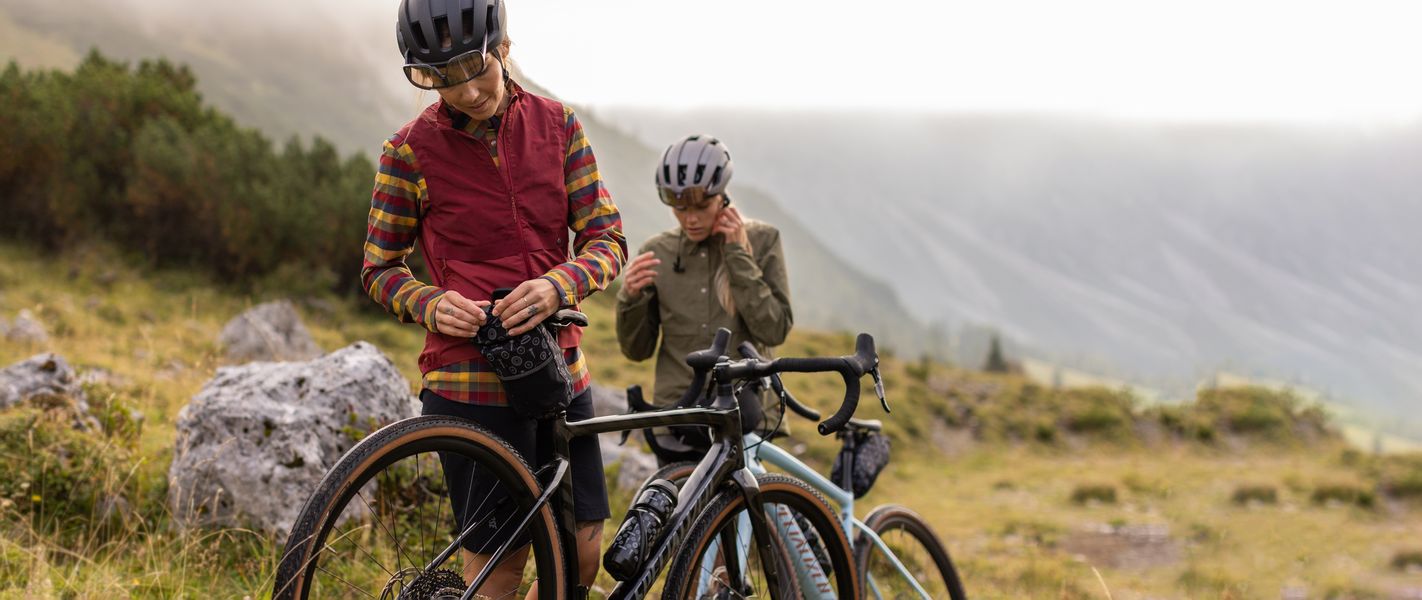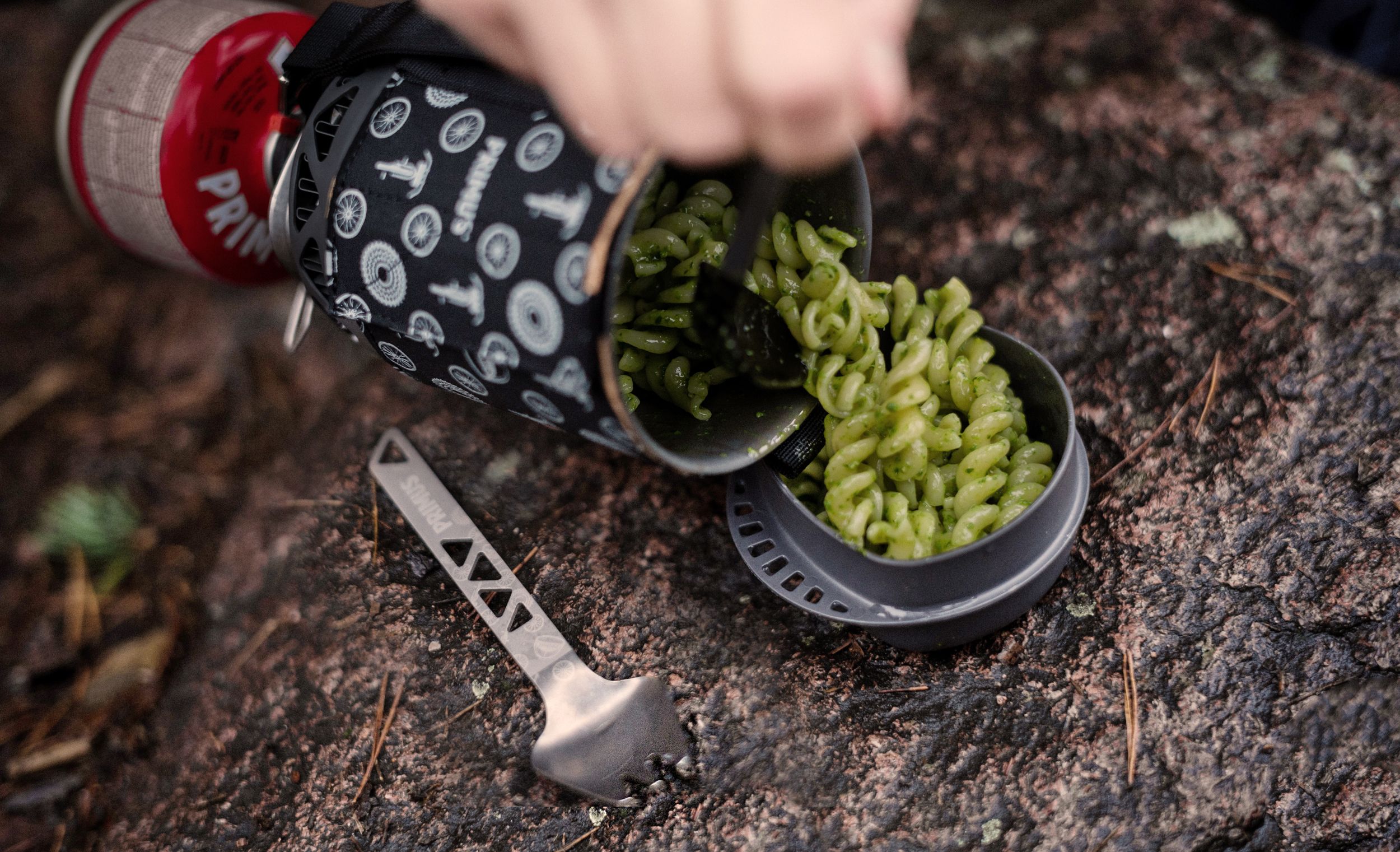

PRIMUS
Bikepacking – An adventurous alternative for your next summer escape
With the rise of gravel bikes, bicycle travel has recently experienced an enormous upswing. There are many reasons for this – starting with the long distances that can be covered on a bike to the greater adventure factor compared to classic bicycle travel. In this blog article, we’ll introduce you to bikepacking as a sport and help you to prepare for your first adventure on two wheels – including a detailed packing list and many tips on how to bring your outdoor bicycle kitchen to the next level."It is by riding a bicycle that you learn the contours of a country best, since you have to sweat up the hills and coast down them", the US writer Ernest Hemingway once said. And indeed: Since its invention in the mid-19th century, the bicycle has been much more than a simple everyday tool for many people – it is a gateway to the world. Even though its importance as a means of travel may have diminished in the meantime compared to Hemingway's times – or perhaps even because of it – bicycle touring today is still an incredibly fascinating way to discover the world.
What is bikepacking?
For this reason, it is no surprise that many adventurers celebrate bikepacking as a trend. Basically, bikepacking is a form of cycling in which riders carry all of their belongings on their bike in specially designed bags rather than using a traditional cycling setup with panniers or a trailer. Bikepackers often travel on gravel bikes, tackle off-road trails and unpaved roads, camp along the way, and may cook their food out in the wilderness, making it a combination of cycling, backpacking, and wilderness adventure. In a nutshell, bikepacking allows riders to explore remote areas and travel long distances self-supported – and is therefore an adventurous alternative for your next summer escape.
Bikepacking vs hiking – In which way are they different?
Bikepacking and hiking are similar in a way that they both involve exploring the outdoors (no matter if it is the next forest or a bigger adventure) and carrying all your gear with you, but they differ in the mode of transportation. This means that you'll be able to cover more ground in a shorter amount of time, but they may also face more physical challenges, such as navigating rough terrain and steep hills. Hiking is generally seen as a more physically demanding activity, as it involves carrying all of your gear on your back and walking for long distances, often over rugged terrain. Bikepacking also requires a different set of skills and gear than hiking, such as bike maintenance, repair knowledge, and specialized bikepacking bags.
Packing list – What you should bring on a bikepacking tour
As in backpacking or hiking, lightweight gear is crucial with bikepacking. However, what you should bring on a bikepacking tour depends strongly on the type of your adventure. Some people love to go on short micro-adventures, overnighters where you sleep in nature just for 1 or 2 days. Others like to go on week-long trips where they sleep in hotels. The most extreme version are bikepacking expeditions, where riders cross whole continents. Like in hiking, everything is possible. How your adventure looks depends strongly on your personal preferences, physical ability, and the specific goals of your trip.
However, some basic packing rules are always the same regardless of a quick overnighter at the next lake or a desert crossing in Australia. A classic bikepacking packing list usually contains the following:
- Bicycle: A bike that is sturdy and reliable and offers a comfortable and efficient riding position is essential for every successful bicycle journey. Therefore, gravel bikes have been proven the perfect choice for many bikepackers. However, road or mountain bikes can also be suitable – depending on the route.
- Bags: The bags are a big difference between a bicycle touring and a bikepacking setup. Bikepacking bags don't rely on racks since they can be mounted directly to the bike. Widespread is a setup with a handlebar bag, a frame bag and a saddle bag. Many companies – also from the outdoor sector – offer appropriate solutions.
- Apparel: Since you'll be longer on the road, you should wear comfortable and, most importantly, functional bicycle clothing. Merino is probably the most popular material regarding gravel bike clothing.
- Shelter: Depending on your trip, you may need a tent, bivy sack, or other types of shelter to protect you from the elements. Look for a lightweight and compact option that is easy to set up and pack away.
- Navigation: Many bikepackers prefer to leave classic roads and ride off the beaten path. Therefore, you should have a navigation device like a modern GPS bike computer with you – that will help you not to get lost even in the most remote areas.
- Tools: Mechanical issues may arise. Therefore, you should carry a basic repair kit that includes items such as a spare inner tube, a multi-tool, and a pump.
- Cooking equipment: You'll want to eat delicious food while out in the wilderness. This could include an outdoor stove, gas cartridges, pots and pans, utensils, and a water bottle or hydration system.
Bikepacking – What to eat?
The last point is indeed an important one in the bikepacking scene. While bike racers get food during a race from their teams in the so-called feed zone, bikepackers are on their own in the wilderness. In principle, there are two groups of bikepackers: the minimalists, who mainly eat energy bars, energy gels, dried fruit or nuts. And those who have their outdoor kitchen with them to create magical cycling meals in the wilderness, from typical pasta or rice dishes to complete menus.
To be able to prepare good meals, you should – as already mentioned – use a stove, a pot, gas, a water bottle and cutlery. Again, it's all about being as space- and weight-saving as possible since there's not much room in the bikepacking bags, and you feel every gram when you're pedalling. With the Feed-Zone Collection, Primus has developed a complete set of bikepacking cooking gear that comes as a handy all-in-one solution that easily fits into your bikepacking bags or can be mounted directly on your bike with the special Primus Rolltop Bag. So you see: With some planning and preparing at home and the Primus Feed Zone gear, your next lunch break out on the (gravel) road will turn into something extraordinary.
You’re looking for inspiration? On our blog, you'll find plenty of recipes for four outdoor activities that will help you to choose the right ingredients and prepare proper meals.
Summary – The outdoor cycling world is waiting for you
In summary, it can be said: There are many reasons why someone might go on a bikepacking trip. Some people enjoy the adventure and challenge of travelling self-supported through the wilderness, while others are attracted to the physical aspects of the sport. Bikepacking can also be a great way to explore new areas. Additionally, it is a very environmental-friendly way to travel, requiring no fossil fuels and generating minimal carbon emissions.
The most important reason is, however, that it allows for a more immersive travel experience: Because you are travelling at a slower pace and carrying all of your gear, your cooking equipment and your food with you, bikepacking can enable you to fully immerse yourself in the places you visit and connect with the local nature more deeply. Something that already US writer Ernest Hemingway knew, who saw cycling as a way to "learn the contours of a country best, since you have to sweat up the hills and coast down them."
February 07 2022







